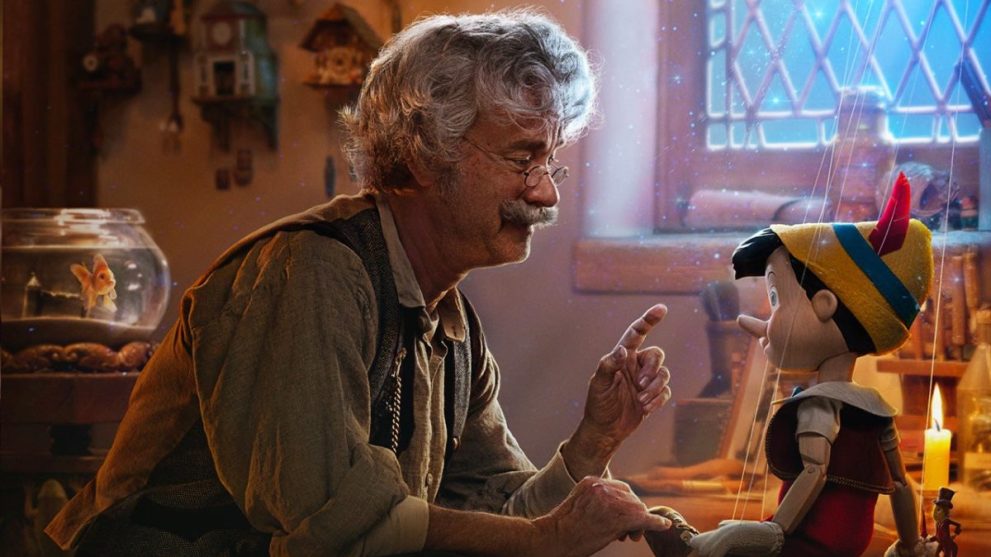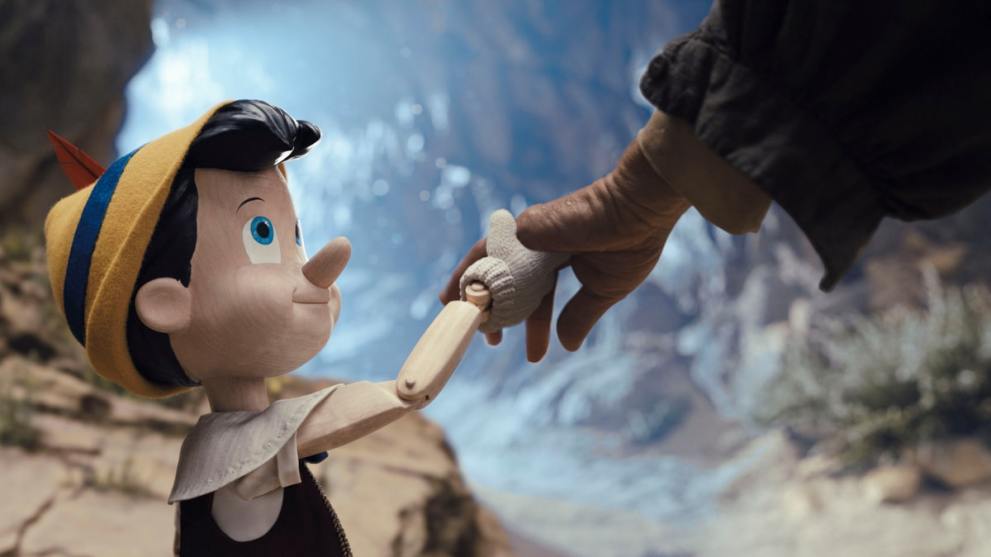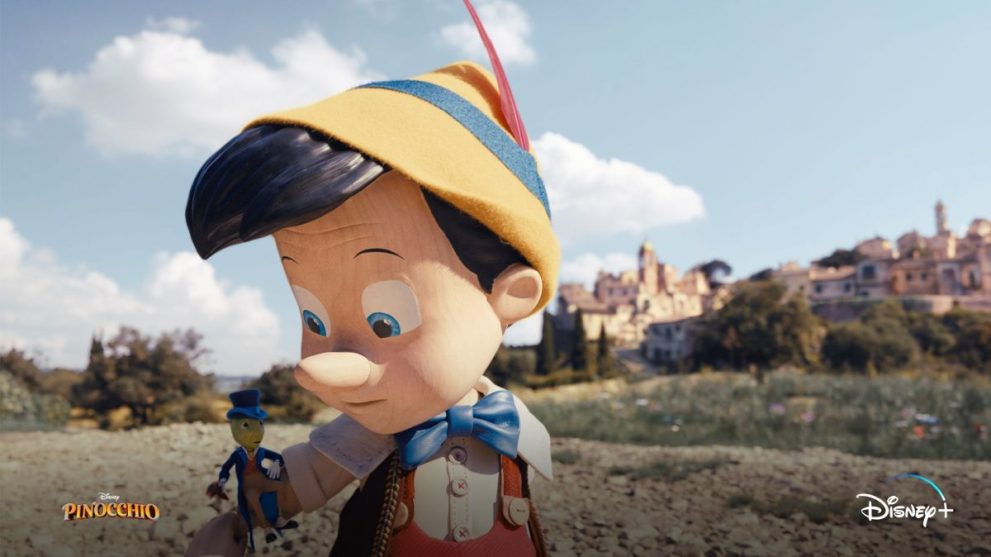Ah yes, it’s that time of year again: Disney has released another live-action retelling of an animated classic that lacks all the inspiration of the original, making us wonder how many more of these things we’re going to get. Three guarantees in life: death, taxes, and another sub-standard Disney live-action retelling. The film industry is healing.
Yes, Disney has just recently released a new adaptation of a classic animated film, and this time, it’s Pinocchio. The second film in the Walt Disney Animation Studios canon back in 1940, Pinocchio remains one of the most beloved animated movies of all time. It’s a classic among classics, and not necessarily the type of film in need of an update.
That said, few are better than Disney at fixing what isn’t broken with a live-action retelling, as we’ve seen with such films as Beauty and the Beast and The Lion King. Thus, it’s now Pinocchio’s turn to get an adaptation, and the film feels just as the puppet himself did before the wish upon a star: soulless.
*Warning: This piece will discuss some spoilers related to Pinocchio.*
All is Well on the Surface

If we look at Pinocchio with little more than a cursory glance, the gist of the film feels intact. Clockmaker Geppetto creates a wooden puppet named Pinocchio, makes a wish upon a star that causes the puppet to come to life, and Pinocchio must be brave, honest and selfless to become a real boy. And every time he lies, his nose grows, and it gets bigger and bigger with each lie.
It’s all here, so fans of the film will be immediately familiar with that element. Visually, even with some awkward character designs (Jiminy Cricket and Honest John come to mind), there’s enough dazzle and life here to delight younger audiences and perhaps even nostalgic older ones. The theme park-esque Pleasure Island in particular is a visual feast, and the bright lights make it one of the most compellingly designed scenes in the film.
The performances of the talented cast of stars are also commendable. Benjamin Evan Ainsworth does his part to keep Pinocchio charming and fun, and Tom Hanks does a predictably strong job with his emotional, caring take on Geppetto. It was also nice to see Joseph Gordon-Levitt almost disappear into his role as Jiminy Cricket; he nails the higher-pitched voice of Jiminy nicely to be a compelling addition.
The best of the best performances, though, come from Keegan-Michael Key as Honest John and Luke Evans as The Coachman. Key really embodies the theatricality of Honest John perfectly, and Evans has a great time chewing the scenery to provide nice charisma.
There’s also a hint at some heart in the movie, specifically in Pinocchio’s interactions with puppeteer Fabiana (lovingly portrayed by Kyanne Lamaya) and her puppet Sabrina (voiced by Jaquita Ta’le). While these new characters don’t appear very often, they shine as some of the sweetest and most emotional pieces in the film. This could’ve been even better if they received larger roles.
Pinocchio Desperately Misses the Point

Sadly, while Pinocchio looks the part of its original film, it desperately misses the mark on the writing front. Truthfully, almost any opinion ever given about almost any other Disney live-action retelling could be copied and pasted here, and it would get the same point across: this is a purely uninspired retelling.
Strip away the flashy visuals and aesthetics, and what are you left with? An adaptation as wooden as Pinocchio himself. A live-action retelling without a lick of soul. A purely unnecessary remake that, quite frankly, does not need to exist.
Iconic scenes have lost all sense of impact, and most embarrassingly, the songs fall flat. Other than the very nice moment of Cynthia Erivo’s Blue Fairy singing When You Wish Upon A Star, new songs like Tom Hank’s Pinocchio, Pinocchio are forgettable romps that just feel pace-breaking compared to everything else. Even the moment where Pinocchio sings the iconic I’ve Got No Strings is a non-starter, as while Benjamin Evan Ainsworth gives it his all, the scene lacks much charm to give it any of the impact of the original.
And while it’s respectable that changes were made to avoid making the film a beat-for-beat adaptation of the original, these changes muddy the original message and cause the remake to miss the point. Pinocchio himself, for example, is far more moral and less mischievous than he was in the previous adaptation. And while that may seemingly make him more likable, it also means that he loses the arc he went through before. Without having as many flaws to grow from, Pinocchio feels more like he’s whisked along in the story, and he doesn’t get the chance to improve, learn or change within the film.
The Pleasure Island scene, despite being the most visually dazzling, perhaps suffers the most from muddying. Disney’s decision to remove the drinking and smoking of the original film makes perfect sense (that’s the last thing you want to see kids do), but the bowdlerization of everything else messes it up. In the past, one could look at the scene and say “well, at least it’s teaching kids not to drink and smoke,” but here, it’s teaching kids to… not eat candy? Not enjoy themselves?
While Pleasure Island retains the theme park design of before, this new version feels more like a fantastical, Disney World-esque area than the original, which felt more like a backlot. While this plays nicely into the idea that everything is not what it seems, the scene feels cheapened because the actions these children are punished for are far cleaner. Arguably the most “mean” thing that these kids do is hold up some signs that say juvenile things like “you stink” and “shut your mouth.” Any other “bad” action feels purely accidental or done by sheer coincidence instead of a genuine desire to be mean.
These poor kids still get turned into donkeys, as they had in the original, but in the past this felt like an appropriate (if scary) way to warn kids against the dangers of drinking and smoking. Here, the kids are turned into donkeys “just because,” and the degree to which they misbehave is not nearly as strong as it was in the past. Thus, whatever impact the message could’ve had becomes totally diluted because it feels like the punishment is not “earned,” so to speak.
Disney further fixed what wasn’t broken by making Pinocchio not want to indulge in the bad behavior, thus not giving him an arc to grow from. Before, having a Pinocchio that felt like “being bad was fun” at least gave him a chance to learn a lesson, but here, he’s too cleaned up and too sweet. This also ruins the scene where he partially turns into a donkey; previously, it felt fair because of how he gave in to temptations, but here, it’s punishing him for the sake of punishing him.
If they really wanted to fix anything, they could’ve changed the fate of the Coachman. In the original film, the Coachman wants to turn the children into donkeys and sell them into slave labor, and he does while getting off scot-free. There was a golden opportunity to show some punishment here, especially since the character Stromboli got arrested for exploiting the employees of the marionette show. Instead, the Coachman gets no such treatment despite being more evil than before. He further manipulates seemingly good children with peer pressure this time around which, combining his more evil actions with less punishable deeds by the kids, only makes this scene feel even more like a cheap dud.
The movie also makes some baffling changes to character designs, most notably with Monstro the whale. Formerly a sperm whale, this film turns him into some kaiju-esque beast. Between these and the Coachman’s bizarre shadowy henchmen, it almost felt like their particular scenes came from totally different films. Director Robert Zemeckis does have a habit of putting more effort into dazzling visuals than spectacular writing, and this is another example.
How Much More Can We Take?

Pinocchio’s new live-action retelling just feels tiring and obnoxious. It’s not even the most outwardly terrible film out there, but it’s yet another example of Disney remaking an animated property without putting any care into retaining the soul of the original film. And with so many other live-action retellings on the horizon, it feels like this is something we’re all going to have to accept.
What’s going to be the straw that breaks the camel’s back? And how bad is it gonna get? Beyond doing all of these remakes, Disney is also planning to make sequels to these re-tellings. It’s clear these films speak more to the business model than anything, but how much more can come out of this?
Pinocchio is another unfortunate remake in a growing lineup of disappointments. With no end to the Disney live-action remake machine in sight, it appears that 2016’s excellent The Jungle Book remake will serve as little more than an outlier in the pantheon of uninspired re-dos from the Mouse House.
But what did you think of Disney’s update to Pinocchio? Let us know in the comments below.
